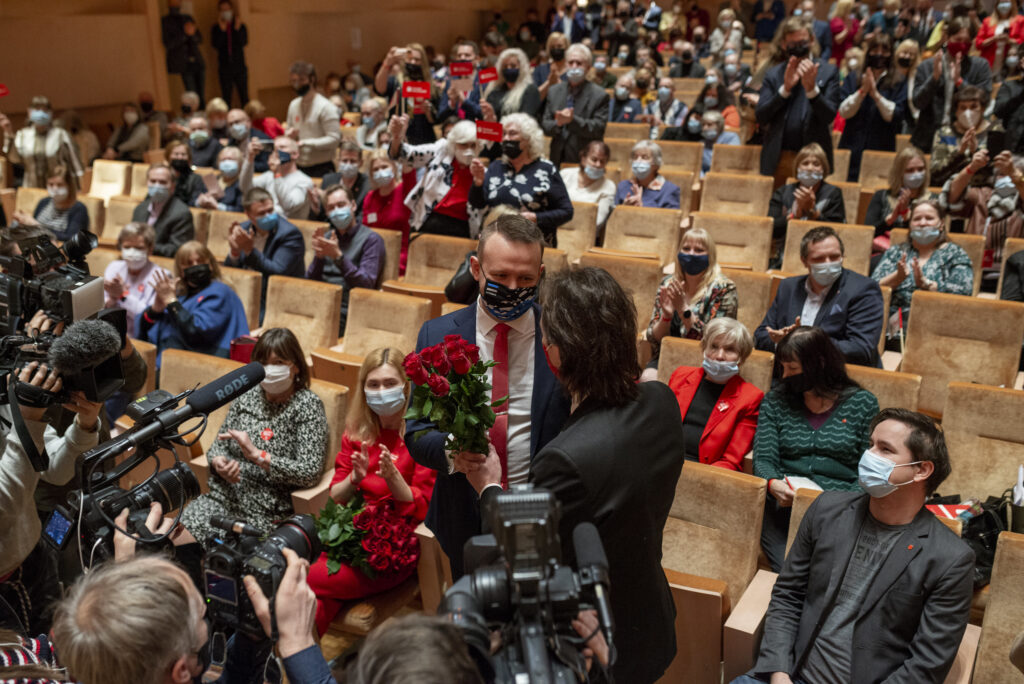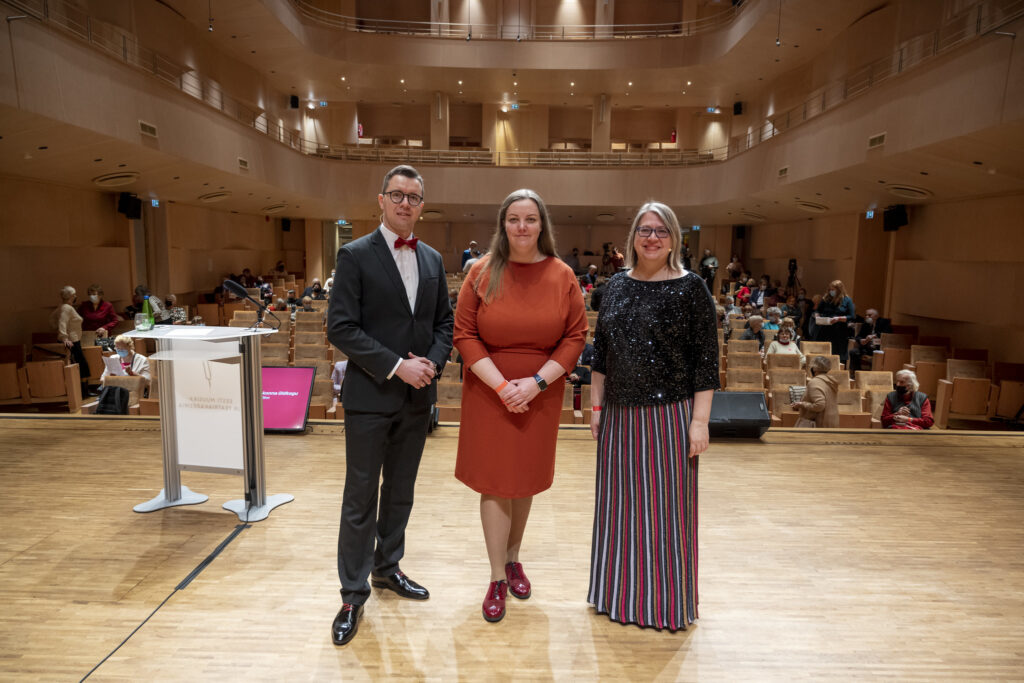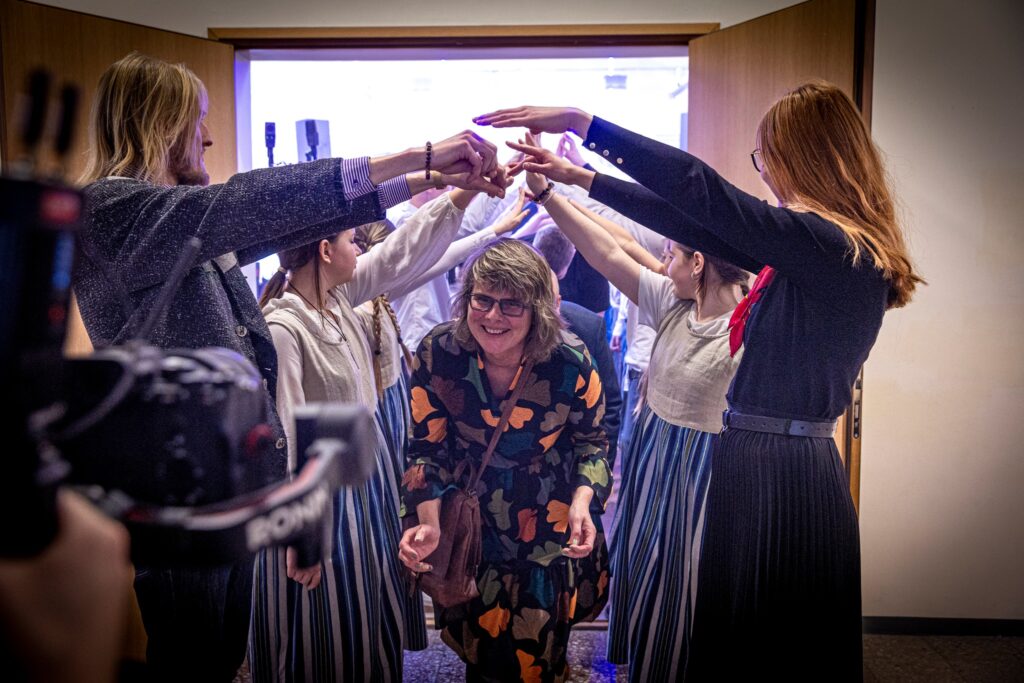The Social Democratic Party is the oldest political party in Estonia and has a diverse group of members. Until 2022, the party members used to physically attend their general assemblies and meetings and vote in person, even if it meant driving for hours just to attend a single meeting. Then the pandemic hit. With internal elections coming up, which, in such a competitive environment, put some pressure on management, the leadership had to find a way to ensure members could remain involved and that nobody would be left out. How could they achieve this while ensuring transparency and integrity? Could they find a reliable online participation platform that would help them?
Maris Sild from the Social Democratic Party in Estonia shares their experience on how after analysing several options they decided to go with the Citizen OS online participation platform.

Internal elections of the The Social Democratic Party in Estonia in 2022. The Citizen OS platform was used to ensure a higher participation of the members. Photo: Patrik Tamm.
Had we not created a way to participate online, approximately half of the delegates would have been left out. This would have been a serious problem for such an important event as choosing the leaders of our party.
Why did you decide to use the online participation platform? What led you to Citizen?
Maris Sild: The need came in response to the pandemic, which utterly changed the way we worked. Prior to that, we had never used online tools for decision-making and it was a completely new departure for us. Even having MEPs (Members of the Parliament – ed.) attending board meetings via Skype was quite rare. It was just normal that the commute to attend a two-hour meeting from one city to another took 2.5 hours each way.
Because we had a general assembly with internal elections coming up and it was not possible to bring everyone together in a shared physical space, we had to look at other options. We have many older people among our members and this meant there was a health risk involved. Also, some other members were uneasy about attending a big meeting. We had to find a solution that worked for everyone, including the senior members. This meant the solution had to be simple enough to ensure that the digital divide would not become an obstacle. The other challenge was to ensure that the security and integrity of the internal elections was sound. On such occasions, tensions can run high, and we had several candidates vying for the head of the Party position. We needed to guarantee that the process was honest and transparent and that it remained a secret ballot.
We consulted several prospective partners. We spoke to the Estonian National Electoral Committee and also VOLIS, which is mainly geared towards municipalities. None of them met all our needs, and the required modifications would have cost us a lot of money. Spending a lot of resources on just one meeting seemed unreasonable. We had met the team of Citizen OS some time before and this brought up the idea to explore whether Citizen OS could meet our needs. After extensive analysis, we came to the conclusion that this was the best fit for us. Only one stumbling block remained – how to ensure the anonymity of the votes. We had not yet figured out how to do this. We eventually solved it by publicly deleting all the votes after the results had been confirmed. We managed to adapt this method effectively.
Following our positive experience, sister-organisations have also used the Citizen OS platform for their internal elections. It’s very likely we will use the Citizen OS platform again next year, as we have internal elections and the General Assembly coming up again. Of course, many things can be done using other existing tools, such as Zoom etc. However, for us it was very important that people could identify themselves using their national ID-card.
We were quite surprised with how smoothly everything went. We had a help desk set up, which people could contact if they had any issues. The percentage of people registered for e-voting who actually completed their vote online was very high. The reason for not completing the election process was more because people did not simply go and use their computers. Most of the queries by members did not concern the Citizen OS platform at all; they were instead about how to use the National ID-card or Mobile-ID.
We also staged a hybrid event. So we had both an online and offline attendance. It was interesting to observe that several of those who came to the physical event still chose to use e-voting. It was faster and easier – you were able to avoid long queues and have a cup of coffee while waiting.
Prior to that, we had never used online tools for decision-making and it was a completely new departure for us. Even having MEPs attending board meetings via Skype was quite rare. It was just normal that the commute to attend a two-hour meeting from one city to another took 2.5 hours each way.
What did you use Citizen OS for?
Maris Sild: We had elections to the board and various management roles. We used the platform for various tasks – from electing the party head to electing members of the Revision Commission and the Court of Honour.
How was this online participation opportunity received by the members?
Maris Sild: Citizen OS trained and supported us very well. The biggest concern came from within ourselves, from the organisers of the internal elections. We wanted to be ready for all eventualities. In the end, everything passed off smoothly. Members received the whole experience in a very positive way, and the feedback showed they felt that we also included those people who would have otherwise been left out due to health concerns. As we tested everyone before getting on the bus to drive to the event venue, some unfortunately tested positive and we had to send them home. However, it was very useful that there was still an opportunity for those individuals to sign up for e-elections, so they could still vote. Had we not created a way to participate online, approximately half of the delegates would have been left out. This would have been a serious problem for such an important event as choosing the leaders of our party.
We also provided a little training session on Zoom and this, too, alleviated several concerns people had. Of course, we first had to teach some of our members how to use Zoom. Now, everyone is able to navigate basic technological tools. So, yes, in a way, the pandemic and Citizen OS boosted our digital transformation.
Of course, we considered whether the system could somehow be “manipulated”. This was the biggest concern for the candidates. Transparency is key. There was indeed some scepticism at the beginning about how such a platform could be both free to use yet safe at the same time. All their questions were answered and their concerns addressed. And of course, the support and information we received from the Citizen OS team was simply top notch.
Did this online participation experience somehow change attitudes towards using technology for democratic participation?
Maris Sild: Yes, absolutely! The Social Democratic Party is the oldest party in Estonia. We come from the time when everything was on paper. None of the members questioned the e-voting process, as people have got used to this in Estonian society due to our long history of government e-services and online elections. It’s just that we had not integrated technology and e-participation within our own organisation to the same extent.
It pushed us forward in the sense that we realised we had many situations in which we had used paper voting without necessarily needing to. In fact, e-voting can be much safer and reliable. Of course, we considered whether the system could somehow be “manipulated”. This was the biggest concern for the candidates. Transparency is key. There was indeed some scepticism at the beginning about how such a platform could be both free to use yet safe at the same time. All their questions were answered and their concerns addressed. And of course, the support and information we received from the Citizen OS team was simply top notch.

Maris Sild (in the middle) with her colleagues after a successful general assembly where online participation was introduced for the first time. Photo: Patrik Tamm.
Was there a difference in the participation rate compared to former in-person internal elections?
Maris Sild: No, there wasn’t! That said, had we not made it possible to both attend and vote online, we would have been less inclusive and would have seen a lower participation rate overall. The competing candidates represented various groupings, and there would have been a serious risk of leaving out a sizeable portion of our members. This could have potentially created mistrust and influenced our organisation in a negative way. Some would have called for the elections to be postponed etc. In the end, embracing this opportunity took those concerns off the table.
What are your recommendations to similar big organisations who are considering online participation?
Maris Sild: Our experience is that you have to offer support to people when engaging new technologies or making changes. Introducing a new environment or process can take people out of their comfort zone.
Information events or the opportunity to seek help from designated support people are very helpful. At the beginning, we even offered support on how to install Zoom, for example – starting from checking together what phone or computer someone has, the operating system and the step by step actions that need to be taken. Bringing this information to people in a clear way is important.
Once the person has gone through the steps, they feel comfortable continuing on their own. Of course, both the leaders and management of the organisation have to be ready and open to changes. The fact that we integrated digital tools and online participation at a time of elections added to the complexity, so integrating a new way for voting certainly caused some added stress. However, once we did it, the other aspects of participation and engagement became much easier. Focusing steadfastly on starting something positive will pay off manifold later on. Our lives and those of our staff have become much easier.
So, to summarise, my recommendations would be:
- Make sure there is the genuine will to engage people online.
- Think through why you’re engaging online.
- Offer support.
- Plan a bit more time for learning and settling in.
- Check if any similar organisations have already done what you plan to do and consult them.
- Ask Citizen OS for support.
For example, we learned that the Estonian Green Party had also used Citizen OS and this gave us much more confidence. The experience they shared with us helped us to make the final decision and raised our confidence.
Integrating a new way for voting certainly caused some added stress. However, once we did it, the other aspects of participation and engagement became much easier. Focusing steadfastly on starting something positive will pay off manifold later on. Our lives and those of our staff have become much easier.
Why use e-solutions?
Maris Sild: It’s a way of saving time and making the processes quicker. When we had 400 participants last time and were making changes in our Statues, it took a lot of time on site to count votes. We often used to use a simple single vote. It is not always reliable when a human is counting raised hands in a big room full of many people. People can make mistakes. Let’s say you have five people counting raised hands: it’s very common that some people might lower their hand, wave it, put their hand up again, etc – all of this can be time consuming and cause confusion. You also have to spend time putting the votes of different people who did the counting together. E-voting gives more security when the product is reliable. It is also positive that the person can choose their time to engage more freely and is not left out just because they are not available to participate at a specific time.
What future can you see online participation having in your organisation?
Maris Sild: In 2024, we will make a decision about our list of candidates for elections to the European Parliament. We will also have internal elections and make many other important decisions. We are always looking for ways to make these processes more efficient. This was another positive to using the Citizen OS platform. The counting of votes went much quicker. It also made the election process more exciting, as we could display the results on the screen very quickly. Counting votes manually takes a lot of time. Sometimes, during internal elections, we had to figure out how to facilitate one and a half hours while the counting was in progress. This is another reason why we are considering that though people might attend physically next year, the voting will take place electronically.



